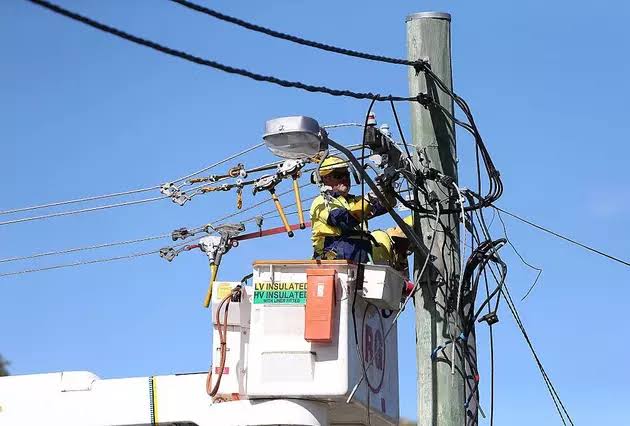Deadly Mishap at Niagara Power Plant: Technician Electrocuted During Routine Maintenance
Deadly Mishap at Niagara Power Plant: Technician Fatally Injured During Routine Maintenance
A tragic incident occurred at the Niagara Power Plant, located in the heart of one of North America’s most iconic landmarks, Niagara Falls. A technician working on routine maintenance inside the plant was fatally injured, sparking an investigation into the circumstances surrounding the accident. This incident serves as a somber reminder of the inherent dangers involved in the operation and upkeep of power plants, particularly those dealing with high-voltage systems that power entire regions.
The Incident
The technician, whose identity has not yet been released, was performing regular maintenance work on a section of the plant’s electrical equipment when the fatal accident took place. According to initial reports, the technician was in a restricted area where maintenance on high-voltage systems was being conducted. Details about the exact cause of the injury remain scarce, but authorities are investigating whether electrical contact, malfunctioning safety equipment, or human error played a role.
This incident occurred during a routine inspection, which is a standard procedure in power plants to ensure that all equipment is functioning as it should. Maintenance teams routinely examine the wiring, turbines, and electrical panels to prevent breakdowns that could cause larger issues such as power outages or even system failure. However, due to the hazardous nature of the work, safety protocols are critical to minimize risks.
Immediate Response
Following the incident, emergency services were immediately called to the scene. Unfortunately, despite the best efforts of paramedics and emergency medical teams, the technician succumbed to the injuries sustained during the mishap. The plant’s emergency response protocols were quickly enacted, and plant operations were temporarily halted as the situation was assessed.
The plant, which is responsible for supplying power to both the local area and beyond, has a long history of safe operations and is equipped with state-of-the-art safety measures to protect workers. However, even with the most stringent precautions in place, the risks associated with electrical work, particularly high-voltage tasks, can sometimes prove fatal.
Safety Protocols Under Scrutiny
In the aftermath of the tragic event, there has been an increased focus on the safety protocols and measures in place at the Niagara Power Plant. Experts agree that power plants, particularly those involved in hydroelectric generation, are among the most dangerous work environments due to the combination of high-voltage electricity, water, and heavy machinery.
Electrical safety experts emphasize the importance of proper training, personal protective equipment (PPE), and regular safety drills to ensure that workers are prepared to handle emergencies. The technician involved in this incident was reported to have undergone extensive safety training, as required by the plant’s regulations. However, the investigation will seek to determine if there were any lapses in protocol or unexpected factors that contributed to the fatal injury.
Investigating the Cause
Authorities from the Occupational Safety and Health Administration (OSHA) and other relevant regulatory bodies have launched a full investigation into the circumstances surrounding the incident. The investigation aims to determine whether there was any fault in the plant’s equipment, whether safety procedures were followed, or if there were any potential failures in the design or maintenance of the equipment.
High-voltage work presents numerous hazards, including the risk of electrocution, fires, and equipment failure. The Niagara Power Plant, like all major energy facilities, is required to undergo regular safety audits and risk assessments to minimize these risks. The results of the investigation could lead to adjustments in safety protocols or changes in equipment procedures if any deficiencies are identified.
Community Reactions
The incident has shocked both the local community and the employees at the Niagara Power Plant. Colleagues of the technician have expressed their sorrow, recalling him as a diligent and experienced worker who was well-respected within the team. The loss of a colleague has deeply affected the plant’s workers, and there have been calls for greater transparency in the investigation and a commitment to improving safety measures moving forward.
The incident has also raised concerns in the surrounding Niagara Falls area. The Niagara Power Plant is a vital source of electricity, not only for the local community but also for the wider region. The mishap has prompted discussions about the safety of power plants and the importance of ensuring the well-being of those who work in these potentially dangerous environments.
Moving Forward
In the wake of the fatal injury, the Niagara Power Plant management has pledged to cooperate fully with the investigation and ensure that all aspects of worker safety are reviewed and strengthened. They have also expressed their condolences to the family of the technician, promising support during this difficult time.
The tragedy has sparked a renewed conversation about the importance of safety in high-risk industries, particularly in power plants. It serves as a reminder of the risks that workers face daily as they perform their critical tasks to ensure that power plants continue to function effectively.
As investigations continue, the focus will remain on ensuring that such incidents are prevented in the future. The goal is to make workplaces like the Niagara Power Plant safer for all employees, so that the legacy of this tragic event can lead to improvements in worker safety, not just in Niagara Falls, but across the energy industry.
Conclusion
The fatal injury of a technician at the Niagara Power Plant is a somber reminder of the potential dangers faced by workers in high-risk industries. While the plant has a solid history of safety and compliance, this incident has underscored the need for constant vigilance and improvement in safety measures. As investigations proceed, there will likely be a renewed focus on how to protect the people who work tirelessly to keep critical infrastructure running. The technician’s tragic death will not be forgotten, and it will hopefully serve as a catalyst for meaningful changes in worker safety standards across the industry.





